How to Use a Jeweler's Tube-Cutting Jig
by Jason von Techshop in Workshop > Metalworking
12902 Views, 56 Favorites, 0 Comments
How to Use a Jeweler's Tube-Cutting Jig
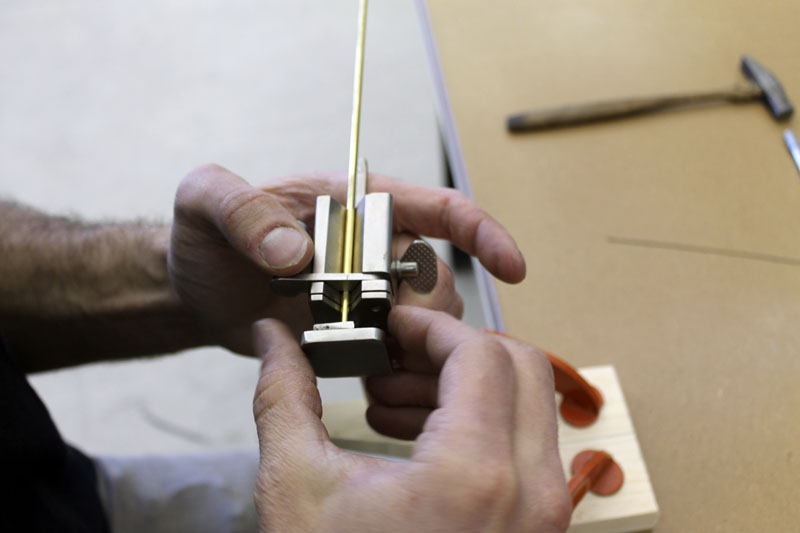
Let's talk about cutting small rods and tubes to precise length with tolerably square ends.
Ready?
Get a tube-cutting jig.
This simple (though finicky-looking) device holds rod and small tubing* in a v-channel, so it won't roll out of place. It includes a pressure clamp to assist work holding and a positive stop - just set the stop, and when you bump your material to the stop you're prepared to cut multiples of the same length. Think about this tool for making rivets and eyelets (and tube-settings for round gemstones, if you're ready for the next level.)
*The jeweler's term for small tubing, usually in a semi-precious or precious metal: chenier
In this case I'm helping my friend Kyle make 30 or so blanks for eyelets. We were working on this project.
Guess where I did all of this? Techshop Detroit! www.techshop.ws
Ready?
Get a tube-cutting jig.
This simple (though finicky-looking) device holds rod and small tubing* in a v-channel, so it won't roll out of place. It includes a pressure clamp to assist work holding and a positive stop - just set the stop, and when you bump your material to the stop you're prepared to cut multiples of the same length. Think about this tool for making rivets and eyelets (and tube-settings for round gemstones, if you're ready for the next level.)
*The jeweler's term for small tubing, usually in a semi-precious or precious metal: chenier
In this case I'm helping my friend Kyle make 30 or so blanks for eyelets. We were working on this project.
Guess where I did all of this? Techshop Detroit! www.techshop.ws
Tools and Materials
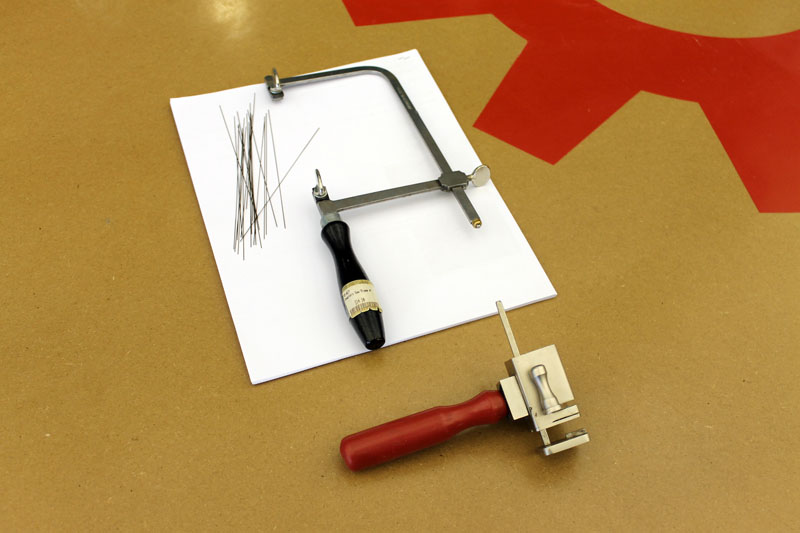
Top: Jeweler's saw frame and blades
Bottom: Tube-cutting jig (bought from a jewelery supply - do a search and you'll find one)
Not Pictured (incredibly enough): Tube material
Bottom: Tube-cutting jig (bought from a jewelery supply - do a search and you'll find one)
Not Pictured (incredibly enough): Tube material
Prepare Your Jeweler's Saw
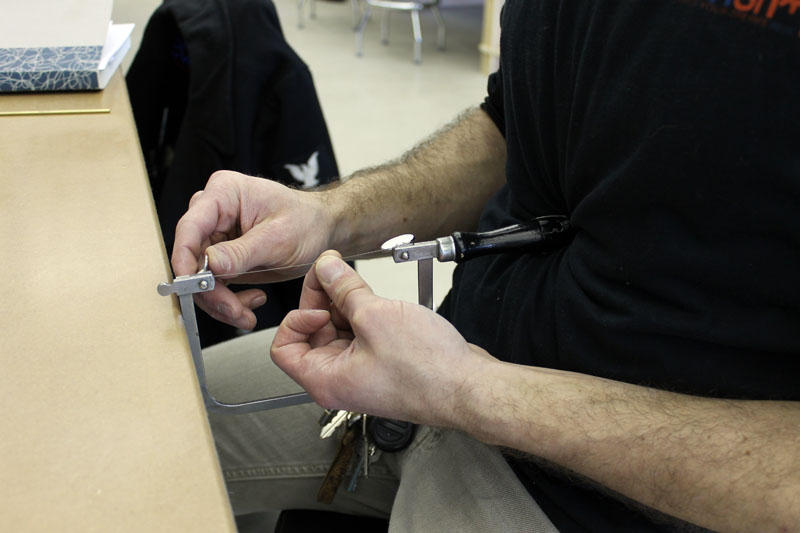
I love the ritual of setting up a jeweler's saw.
Here's a great video that covers the basics of how to string one, and how to use it:
https://www.instructables.com/id/Cool-Wave-Ring/step3/Jewelers-Saw-cutting-out-template/
*APPENDIX TO VIDEO*
- You don't need the volume on, there's just energy-house music playing, no verbal instructions
- The blade teeth should be facing toward you and down. So lightly stroking up on the blade will catch your finger and indicate tooth direction.
- "Checking for correct tension" means gently plucking the blade - a sweet-sounding "ping" is just right.
Here's a great video that covers the basics of how to string one, and how to use it:
https://www.instructables.com/id/Cool-Wave-Ring/step3/Jewelers-Saw-cutting-out-template/
*APPENDIX TO VIDEO*
- You don't need the volume on, there's just energy-house music playing, no verbal instructions
- The blade teeth should be facing toward you and down. So lightly stroking up on the blade will catch your finger and indicate tooth direction.
- "Checking for correct tension" means gently plucking the blade - a sweet-sounding "ping" is just right.
Set Up Your Jig
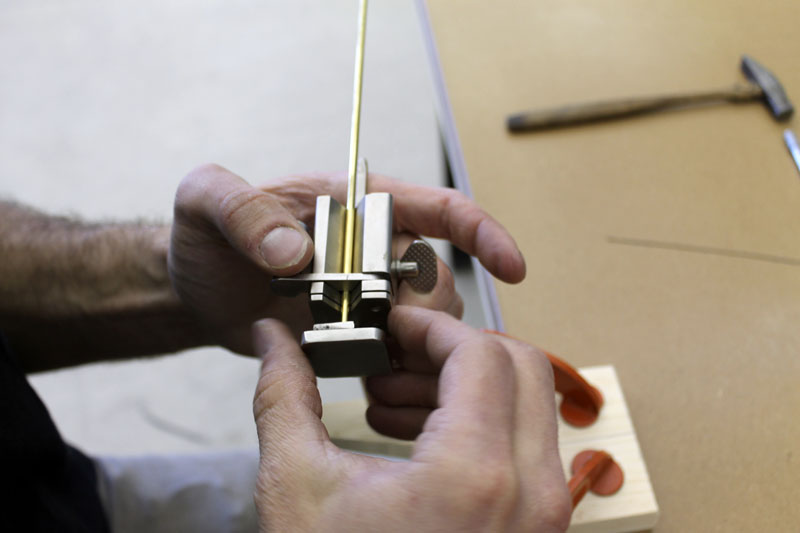
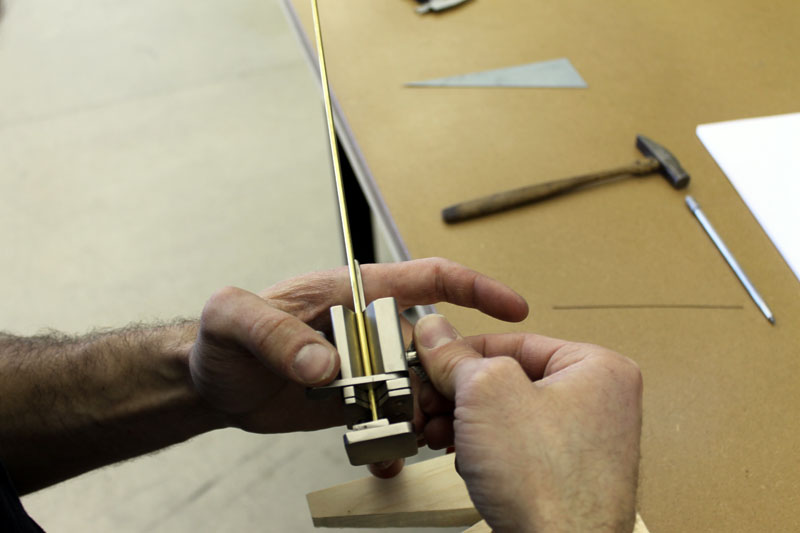
As you see, my tube cutting jig is hand-held. Or, rather, it has a red handle; I won't rely on just my grip to hold the thing steady!
So, the setup includes a bench pin, as you see. I hold the jig upright into the wedge of the bench pin.
Set the stop (the fence on the arm to the right) and tighten it in with the set screw, as seen in the second photo. There's a narrow slot toward the right side of the jig; this is where the saw blade passes for cutting. You'll be measuring between the stop fence and that narrow slot to determine the length of your piece.
So, the setup includes a bench pin, as you see. I hold the jig upright into the wedge of the bench pin.
Set the stop (the fence on the arm to the right) and tighten it in with the set screw, as seen in the second photo. There's a narrow slot toward the right side of the jig; this is where the saw blade passes for cutting. You'll be measuring between the stop fence and that narrow slot to determine the length of your piece.
Make Your Cuts
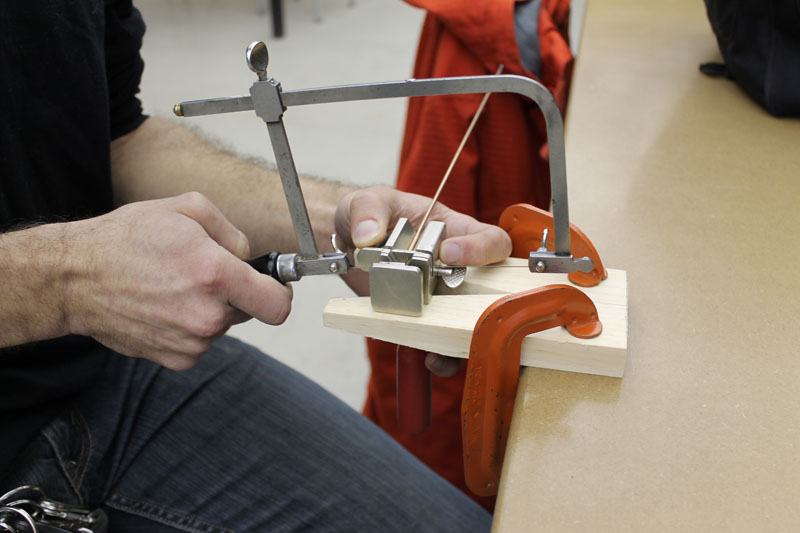
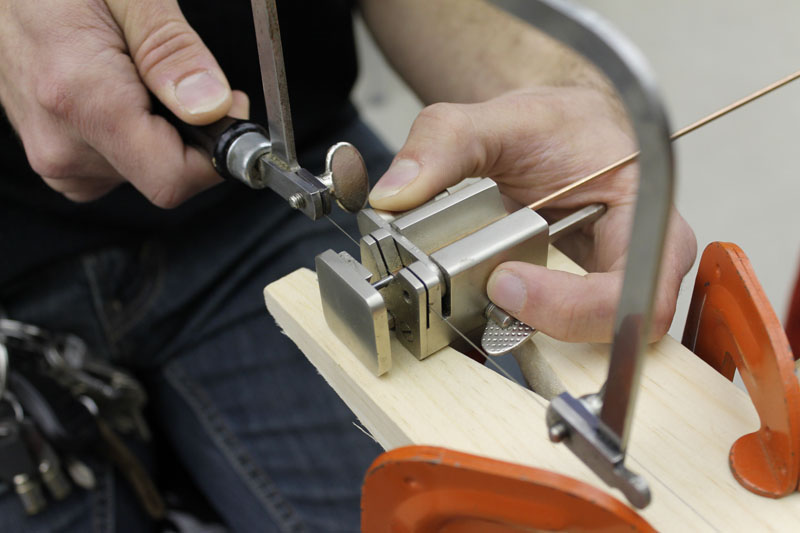
Here you can see the material in the jig; the tension clamp held by my left thumb; the saw blade in the sawing slot and in a perpendicular position; and the whole shebang supported by my bench pin. Saw steadily and let the blade feed itself; remember, it cuts on the DOWN STROKE ONLY (in this case, when you're pulling the blade toward you.)
Done-sies
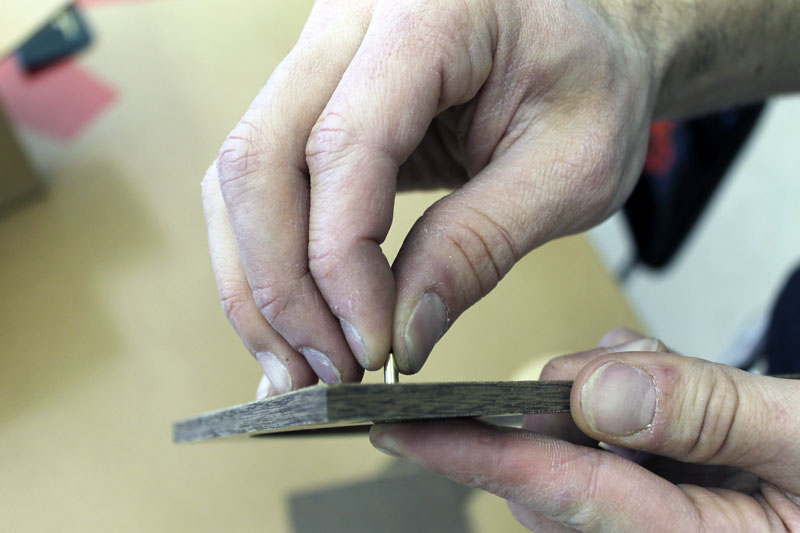
Here's a shot of the featured metal tube niblet being pushed through a hole in phenolic resin - ready to become an eyelet in an amplifier mother board.
Beautiful!
Beautiful!